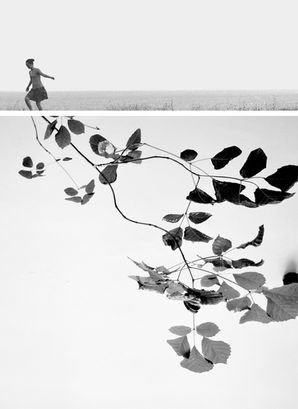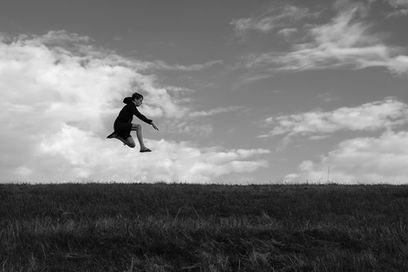
THE MEMORY OF THE FEMALE BODY:
THE ARCHETYPE OF BEAUTY
April 6, 2022
INTERVIEW
PHOTOGRAPHY Lorenzo Vitali
INTERVIEW Melanie Meggs
Throughout history, human culture has found ways to capture beauty through art, whether it is in paintings, sculptures or photographs. For centuries, artists have been inspired by the female body as a source of beauty, with the understanding that beauty itself is ever-evolving and subjective. Lorenzo Vitali has continued this tradition, but with a modern twist.
Lorenzo is an Italian photographer and visual artist based in Genoa. He has developed his own aesthetic sense by merging traditional elements with innovative approaches to create unique works of art. He pays special attention to shapes and materiality, and frames his works within a conceptual discourse with a strong focus on formal research. One of his latest projects, "The Memory of the Female Body: The Archetype of Beauty", seeks to crystallise female beauty through a series of photographs that hint at the archetype of beauty, much like the frescoes slowly fading away on the walls of ancient residences.
In this project, Lorenzo explores beauty and emotionality through melancholic images that capture fleeting moments of beauty before they vanish, as if in a dream. Through his photography, Lorenzo seeks to remind us of the beauty that is all around us, often hidden in plain sight, and to give us pause to contemplate the ever-changing nature of beauty. In short, Lorenzo Vitali presents us with a creative and experimental approach to capturing beauty that is both thought-provoking and visually captivating.

“I would like my works to show not only my aesthetic values but also my deep respect for other human beings and in particular for women. What I try to suggest, furthermore, is a different and personal perspective in interpreting the reality that surrounds us. The result is a photographic language that I would define expressive, accompanied by a poetic vein.”
IN CONVERSATION WITH LORENZO VITALI
THE PICTORIAL LIST: Lorenzo please tell us about yourself.
LORENZO VITALI: I was born in Milan and I’ve been living in this large and very stimulating city all my life. I started photographing since I was 8 years old when I was given a Kodak Instamatic with which I took thousands of slides. However, my life was in medicine for many years, working in hospital as a doctor first and then as a director, but I have never neglected photography. However, in recent years, photography has become my main activity.
TPL: What draws you to photography and art? How did your journey into photography begin?
LV: Since I was a boy, the whole world of visual arts had a great fascination for me: visiting art galleries, Italy is so rich of, allowed me to get to know the work of the great painters and outlined my ideas about aesthetics. Photographic books and exhibitions have brought me into contact with photographers who had made the history of photography. The aesthetic research of shapes sculpted by light has always attracted my gaze in an irresistible way. As a boy I analyzed reality through the viewfinder of my first Reflex (an Asahi Pentax Spotmatic) and this proved to be the trigger which set off most of my ideas. Observing the image projected by my Durst enlarger on the work surface, then seeing it disappear and reappear in the development bath was an intense and unforgettable emotion. My first experiences were in the field of photo reportage and fashion, but I would say that in the course of my life I have explored almost all photographic genres because I am curious. I think this helped me hone my technique.
TPL: In your project THE MEMORY OF THE FEMALE BODY: THE ARCHETYPE OF BEAUTY you describe it as "a memory of beauty, which appears and then vanishes like a fresco" blurring the female body as if it is now a part of history. How and when did this project first manifest for you? What is the full story behind the project? What was the inspiration?
LV: For some time now the theme of beauty, and female beauty in particular, has been one of the main research fields of my business. However, I have never taken glamorous photographs and, if anything, the study of form was the very center of my interest. In this work, however, I wanted to go further and express more what remained fixed in my mind rather than what I could observe with my eyes at the moment of the shot. The reference to the shadows of Hiroshima or the casts of Pompeii came naturally. The aim was to give a materiality to my memory. So we can say that the inspiration came from my lived life and from my memories which are therefore sometimes sharper and sometimes more nuanced. Overall, I think I have a poetic vision of this theme.
TPL: What are any lasting impressions you would like to leave the viewer? What is their 'takeaway'?
LV: I think that the viewer in front of a single work can grasp some aspects that I wanted to highlight. The concept of beauty, as an example. If an observer has a different sensitivity, he will have his own personal perception, in the end. And that might be very different from my original one. However, I would like my works to show not only my aesthetic values but also my deep respect for other human beings and in particular for women. What I try to suggest, furthermore, is a different and personal perspective in interpreting the reality that surrounds us. The result is a photographic language that I would define expressive, accompanied by a poetic vein.
TPL: Do you have any favourite artists and photographers? If you could just choose one photographer to photograph alongside for a day...who would you choose? And why?
LV: Apart from the great authors who made the history of photography, among the contemporaries I greatly admire the work of Gregory Crewdson and his way of interpreting staged photography.
Gregory Crewdson would be my choice: I really love his ability to recreate perfect sets that seem at first glance shot like a reportage and are instead the result of the work of many people who spend a lot of time setting up the scenes and shooting. However, I would only photograph with him as long as he paid the expenses. Unfortunately, I know this kind of photography requires a very high budget I couldn’t afford at the moment.
There is no causal link between what I write “with light” and what I write “with a pen”. They arise from a single idea that is inside of me. So I can't separate the two because it's just one thing.

TPL: What do you think is your next chapter in your exploration with future projects.
LV: I have several projects in the process of being set up. As usual, I start by researching the subject and this always takes a long time. So I still don't know which of my projects is closer to the final realization, even if a project that talks about architecture and metaphysics is now in a fairly advanced stage.
TPL: Is there a special photographic moment you recall that will always remain with you...one maybe that changed your view of the world in which you photograph in?
LV: I think that after having explored various photographic genres, at some point you feel the need to stop and think for a while and then follow a fairly precise path. This happened to me a few years ago and for a year I stopped taking pictures. I resumed when I realized that I had to look at the visual arts as a whole and not at photography and that's it. This broadened my vision of the world to explore. It became clear to me that the important thing was not so much the medium I used to express myself, but only what I had to say mattered. Let's say that therefore I always look at reality with an attitude more aimed at having an outcome in which the technique I use from time to time must never be the first thing that strikes the observer, but only the support that allows me to establish a connection with the viewer.
TPL: Is there any advice that you would give yourself if you started photography all over again?
LV: Perhaps the only advice I would give myself is to photograph less and think more, but I guess I wouldn't follow that.
TPL: Does the equipment you use help you in achieving your vision in your photography? What camera do you use? Do you have a preferred lens/focal length? How much post-processing do you do?
LV: Good equipment is essential to maintain high quality standards. However, we must never forget that it is only a means to an end. In the past I have used all kinds of equipment, from rangefinder cameras to classic film Reflex. From 2007 I switched to using digital cameras, always DSLR (Canon in general) with various lenses. Recently I have also very much appreciated mirrorless cameras and in most cases I am using a Canon EOS R5 with both my old EF and new RF lenses. I prefer preferably bright focal lengths in relation to the type of images I have to make. Perhaps I prefer the short and standard focal lengths.
Post-production is an integral part of photographic work and must be used in coherence with the type of photography we are making: therefore the processing in documentary works is minimal while it becomes more important when it comes to conceptual interpretive photography. I personally post-produce my photos.
TPL: When I am not out photographing, I (like to)…
LV: I like doing lots of things: eating great food and drinking good wine, meeting interesting people and rambling around. But I often end up thinking about what I could photograph.

Lorenzo Vitali's project is an inspiring and unique work of art that pays homage to beauty. His creative approach to photography, combined with his conceptual discourse, offers viewers an opportunity to contemplate beauty in a new light. It is a reminder that beauty is all around us, but that it is ever-changing and always fleeting. We invite you to take a moment to explore Lorenzo Vitali's work and gain a newfound appreciation for the beauty that exists in all its forms.




































